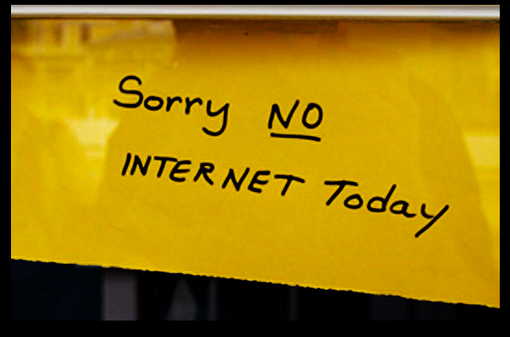In the light of the recent CrowdStrike incident, it’s a good idea to look at how much dependency there is on Internet service providers, and it’s advisable to have more diversity to avoid an incident of this magnitude repeating.
According to Cloudflare’s Q2 Internet Disruption Report, there is much dependency on large Internet service providers. For example, with an estimated subscriber base in excess of over 460 million, any Internet disruption affecting Reliance Jio’s network (AS55836) is going to have a widespread impact across India.
Read more: CrowdStrike outage: Reasons, analysis & precautions
On June 18, Reliance Jio experienced two disruptions that occurred between 13:15 – 17:15 local time (07:45 – 11:45 UTC). Each disruption lasted less than an hour and dropped traffic levels to approximately half of those seen at the same time a week prior. Both mobile and fiber connectivity was affected, and no additional information has been provided by Reliance Jio regarding the root cause of the connectivity issues.
Several regions rely on big internet providers. According to an X post by Cloudflare in May, Nepal was impacted by an Internet disruption, mostly affecting two Internet providers, Vianet and Dishhome. The incident seems to be related to a non-payment dispute with upstream providers in India.
In Nepal, a number of local Internet service providers including AS45650 (Vianet) and AS139922 (Dishhome) rely on Indian provider Bharti Airtel for upstream connectivity, enabling them to reach the rest of the Internet. A published report notes the dependency, noting “Nepali ISPs buy 70 percent of their internet from Airtel.”
Dishhome may not have experienced a near-complete outage like Vianet did because Bharti Airtel is one of four upstream providers used by its parent company, whereas it is one of Vianet’s two upstream providers.
Those with an international subscriber base, like SpaceX Starlink’s satellite Internet service become unique, so outages on its network have a more wide-reaching impact than issues with an ISP that covers a single country. At 01:59 UTC on May 29, Starlink shared on X that it experienced a network outage, and that it was actively implementing a solution.
International Political Events Impact Internet
Internet access is essential now, and it’s entering political discussions. Concerns over a potential Internet shutdown during planned protests against tax increases proposed in Finance Bill 2024 by the Kenyan government led to the publication of a joint statement signed by multiple organizations.
During the two-plus years of the Russia-Ukraine conflict, Ukraine’s power grid has been a frequent target for Russian air attacks. When damage to Ukraine’s electrical power infrastructure occurs because of these attacks, Internet connectivity is also disrupted.
Cable Cuts
Cable cuts, both terrestrial and submarine, caused Internet outages across several countries, with the ACE submarine cable being a particular source of problems. The magnitude of the initial impact varied by country, with traffic initially dropping by 10-25% in Kenya, Uganda, Madagascar, and Mozambique, while traffic in Rwanda, Malawi, and Tanzania dropped by one-third or more than compared to the previous week.
Read more: Guardians of blockchain: Reinforcing cybersecurity in the digital age
A reported “network interruption” on the Africa Coast to Europe (ACE) submarine cable disrupted traffic across networks in the Gambia, Mauritania, and Senegal on June 5. A nationwide power outage in Ecuador on June 19 impacted hospitals, homes, and the subway, in addition to causing a major disruption to Internet connectivity.
Whatever the reason, such Internet outages are not just about not accessing Netflix or social media anymore. A slew of industries are impacted bringing the world to its knees. As such, it could be good prevention to not rely on a single big provider for a big region.












